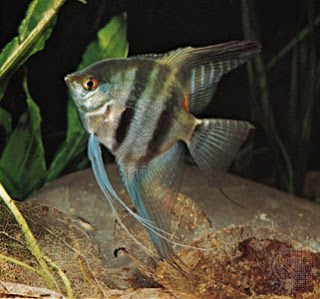If you came to the conclusion that you want to set up an aquarium of tropical fish for the fun of yourself and your family, then you probably need some guidance on how to start. If you've never had an aquarium before, then it is advisable to start with aquarium fish fresh water, because they are easier to maintain.
Aquarium fish freshwater, as opposed to their bright and flashy cousins of the saltwater variety, can be a good experience for people who have never supported the fish before. Saltwater aquarium tanks can be very difficult to establish and maintain properly. For this reason, it is strongly recommended that these new keeping fish, first from freshwater fish. After being able to meet the challenges of keeping alive freshwater fish and their aquarium in good condition at this time, you can broaden your horizon keeping fish and branch water saltwater aquarium in the area.
Ultimately, no matter what kind of aquarium or tank that you choose for your aquarium fish fresh water as far as care and maintenance is concerned. However, if you can not keep to a regular, weekly cleaning and maintenance of the tank, then perhaps you should not even bother setting up an aquarium.
In addition, you will also need to monitor your tropical aquarium on a daily basis. You must be sure that water is always balanced for your aquarium fish and freshwater that good and comfortable temperature is constantly maintained. The other daily task that you must remember to do is to ensure that your fish receive the correct amount and type of food needed.
After determining that you will be able to follow the regular maintenance of aquarium fish fresh water, then you can start to decide on what kind of fish you want to include in your tropical aquarium. The tropical aquarium you choose must be large enough so that it can accommodate the number and types of fish that you intend to buy. The overcrowding of a tropical aquarium can be a fatal mistake, because it can cause water tanks and contaminated fish can lead to patients. Before making your final decision, be sure to ask the size of the fish will be selected at maturity, that the size may vary greatly depending on the species. A beginner keeping fish might want to start with 10 to 20 gallons tropical aquarium and fill it with small and heartier varieties of freshwater fish.
To maintain a healthy environment for your fish aquarium freshwater, you'll need to have a quality system for filtering water, a water heater reliable and beautiful aquarium decorations and accessories. When creating your aquarium tropical freshwater, be sure to choose a location in the house where light and temperature can be controlled so that it remains constant. And remember that once your tropical aquarium is created and filled, it will be very heavy, so make sure it is on solid flooring that can handle the load.
Aquarium fish freshwater, as opposed to their bright and flashy cousins of the saltwater variety, can be a good experience for people who have never supported the fish before. Saltwater aquarium tanks can be very difficult to establish and maintain properly. For this reason, it is strongly recommended that these new keeping fish, first from freshwater fish. After being able to meet the challenges of keeping alive freshwater fish and their aquarium in good condition at this time, you can broaden your horizon keeping fish and branch water saltwater aquarium in the area.
Ultimately, no matter what kind of aquarium or tank that you choose for your aquarium fish fresh water as far as care and maintenance is concerned. However, if you can not keep to a regular, weekly cleaning and maintenance of the tank, then perhaps you should not even bother setting up an aquarium.
In addition, you will also need to monitor your tropical aquarium on a daily basis. You must be sure that water is always balanced for your aquarium fish and freshwater that good and comfortable temperature is constantly maintained. The other daily task that you must remember to do is to ensure that your fish receive the correct amount and type of food needed.
After determining that you will be able to follow the regular maintenance of aquarium fish fresh water, then you can start to decide on what kind of fish you want to include in your tropical aquarium. The tropical aquarium you choose must be large enough so that it can accommodate the number and types of fish that you intend to buy. The overcrowding of a tropical aquarium can be a fatal mistake, because it can cause water tanks and contaminated fish can lead to patients. Before making your final decision, be sure to ask the size of the fish will be selected at maturity, that the size may vary greatly depending on the species. A beginner keeping fish might want to start with 10 to 20 gallons tropical aquarium and fill it with small and heartier varieties of freshwater fish.
To maintain a healthy environment for your fish aquarium freshwater, you'll need to have a quality system for filtering water, a water heater reliable and beautiful aquarium decorations and accessories. When creating your aquarium tropical freshwater, be sure to choose a location in the house where light and temperature can be controlled so that it remains constant. And remember that once your tropical aquarium is created and filled, it will be very heavy, so make sure it is on solid flooring that can handle the load.
















